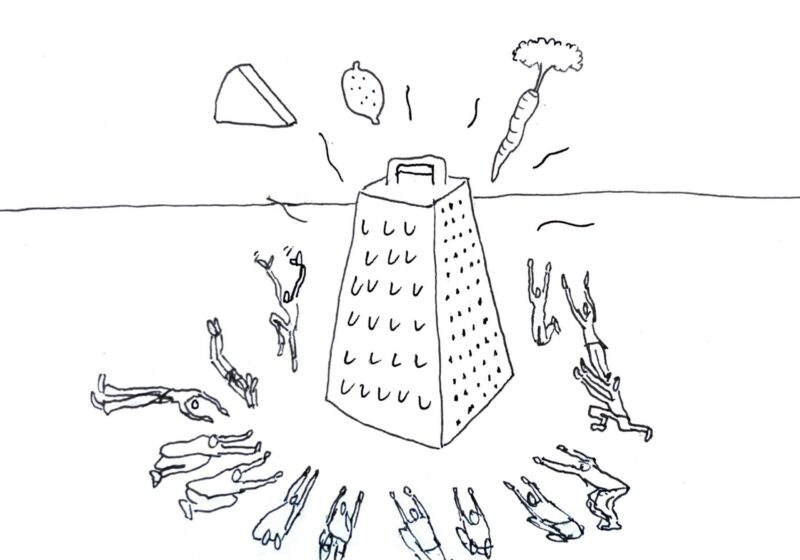Against the Cleveland Cavaliers, center Nikola Jokić posted 26 points, 18 rebounds, and 16 assists in 35 minutes. That same night, Luka Dončić put up 47 points, 12 rebounds, and seven assists under the same playing time and with similar efficiency.
Despite Shai Gilgeous-Alexander not having the best night, his season shines bright, bringing the Oklahoma City Thunder to the first seed in a historic franchise turnaround. While forward Jayson Tatum and Giannis Antetokounmpo sit atop the Eastern Conference, the question must be asked: Is there a definitive MVP this season?
In 2017, Russell Westbrook won the award for his historic season averaging 31.6 points, 10.7 rebounds, and 10.7 assists per game; despite these statistics, the Oklahoma City Thunder finished as the sixth seed in the Western Conference with a 47–35 record. They would fall 4–1 to the Houston Rockets — yet the nature of MVP discourse would change completely.
The 10 previous awards belonged to the best players on the highest seeds, with no winner having a team below the third seed in their respective candidate. Yet — it cannot be understated how incredible Westbrook’s season was despite his team’s record. It begs the question: Does the MVP award belong to the best player on the best team, or the player most statistically valuable to those around him, on both ends of the court?
Let’s first look at the best players on the best teams this season: Gilgeous-Alexander of the Oklahoma City Thunder, and Tatum of the Boston Celtics.
The narrative around Shai Gilgeous-Alexander’s MVP candidacy most definitely cannot be ignored, with the 25-year-old transforming the Thunder from last season’s 10th seed to the third seed this year. With the average team age being 23.8, OKC’s ascension is nothing short of incredible — without the veteran leadership or traditional structure that most playoff teams would have, this team has found their chemistry quickly.
Atop the Eastern Conference, Tatum looks to get over the hump after a recent Finals loss and finally reach the coveted championship. With arguably the best iteration of the team, the Boston Celtics look to add the 18th banner to their trophy case this June.
Despite these players holding the top seed in their respective conference, their status is not necessarily reflective of their value. With two MVPs and a championship under his belt, Jokić is further looking to solidify himself as one of the greatest centers of the modern age — and with the Nuggets sitting atop the Western Conference, establishing the league’s newest dynasty feels well within reach for Denver.
More notably, the on/off stats of each MVP candidate paint an important picture: that without Jokić, the Nuggets are an entirely different team.
Even with the third highest on-court offensive rating, Tatum has the lowest on/off differential of all players listed here, making the argument that the Celtics’ success is largely a team effort headed not only by Tatum, but by players like Jaylen Brown, Kristaps Porziņģis, Jrue Holiday, and Derrick White.
Despite a tumultuous season involving the acquisition of Damian Lillard and three different coaches, Antetokounmpo has continued to maintain his dominance as one of the best players in the world with arguably one of his best career seasons to-date (30/10/5 on 60+ FG for the first time in his career), despite not receiving the same media attention in terms of MVP candidacy.
More importantly, Antetokounmpo is arguably the best defensive player on this list, averaging 2.3 stocks (blocks and steals) per game. Defensive rating is defined as an estimate of points allowed per 100 possessions, while defensive win shares are an estimate of the total wins added to a team’s season based on an individual player’s defense. Finally, Basketball Reference lists defensive box plus/minus as “a box score estimate of the defensive points per 100 possessions a player contributed above a league-average player, translated to an average team.”
Outside of the team’s defensive rating (which is more indicative of the team’s performance than Antetokounmpo), the individual stats further support the stellar season the Greek Freak is having. With back-to-back MVPs under his belt, Antetokounmpo will unfortunately have to wildly impress voters in order to tower over the historic seasons other candidates are having this year.
Lastly, we cannot ignore the season Dončić is having and the averages he continues to put up at the age of 24 despite only being the fifth seed. Many media analysts predicted the Mavericks to miss the playoffs, lamenting the blockbuster Kyrie Irving trade as well as mid-season acquisitions for center Daniel Gafford and power forward P.J. Washington. Despite this, Dončić is averaging a whopping 33.9 points, notably shooting 38.2% from three-point range.
Should seeding matter, then, to evaluate a player’s MVP eligibility? Should the player with purely the best stats automatically win? What about the player statistically most valuable to the winning of their team? With all of these candidates having incredible seasons, a singular on/off metric does little to make a solid argument for one particular player, as does simply comparing their per-game averages.
We’ve created a metric that aggregates per-game individual player impact in order to better visualize the performances of these players over the course of the season. The IMPACT metric combines estimated field goal percentage (eFG%), true shooting percentage (TS%), game score (GmSc), and player efficiency rating (PER).
While eFG% and TS% are more indicative measures of shooting performance and efficiency, GmSc and PER are comprehensive statistics that measure the entirety of a player’s offensive and defensive impact on their team over the course of a single game. These were normalized and weighted (0.1, 0.3, 0.4, and 0.2 for eFG%, TS%, GmSc, and PER respectively) — metrics like game score and player efficiency rating that incorporate a greater degree of offensive and defensive statistics in a single game were given higher ratings as opposed to estimated field goal percentage, that only compares three-point field goals against two-pointers. The greater a metric incorporates the total performance of an individual player, the higher weight it receives. Rochester’s Cantay Çalişkan, assistant professor of instruction at the Goergen Institute for Data Science, was also consulted in order to verify our methodology.
Finally, the IMPACT metrics for our five MVP candidates were visualized against each other, with data points interpolated for connectivity and interpretability:
Notable games from this distribution include Luka Dončić’s 73 point performance against the Atlanta Hawks on Jan. 26th, as well as Antetokounmpo’s 64 points and 14 rebounds against the Indiana Pacers on Nov. 17th, 2023. The IMPACT metric takes into account shooting performance and efficiency, as well as blocks and steals to better account for a player’s contributions to their team on both ends of the floor.
Compare this with the top-5 MVP candidates of last season: Antetokounmpo, Tatum, Gilgeous-Alexander, Jokić, and star center for the Philadelphia 76ers, Joel Embiid. Despite knowing retrospectively that Embiid won the award, the IMPACT metrics over the course of the 2022–2023 season further illustrate just how close the performances of these candidates are, and how many extrinsic factors come into play when holistically evaluating these players’ MVP case.
These visualizations, then, paint a broader picture on just how close the MVP race is, and how all of these players, each with their own journeys and narratives, are contributing to the success of their respective team this season. Though the available statistics build a foundation for how we can evaluate their respective performances, the IMPACT metric allows us to much more easily visualize how these candidates fared over the course of the season.




